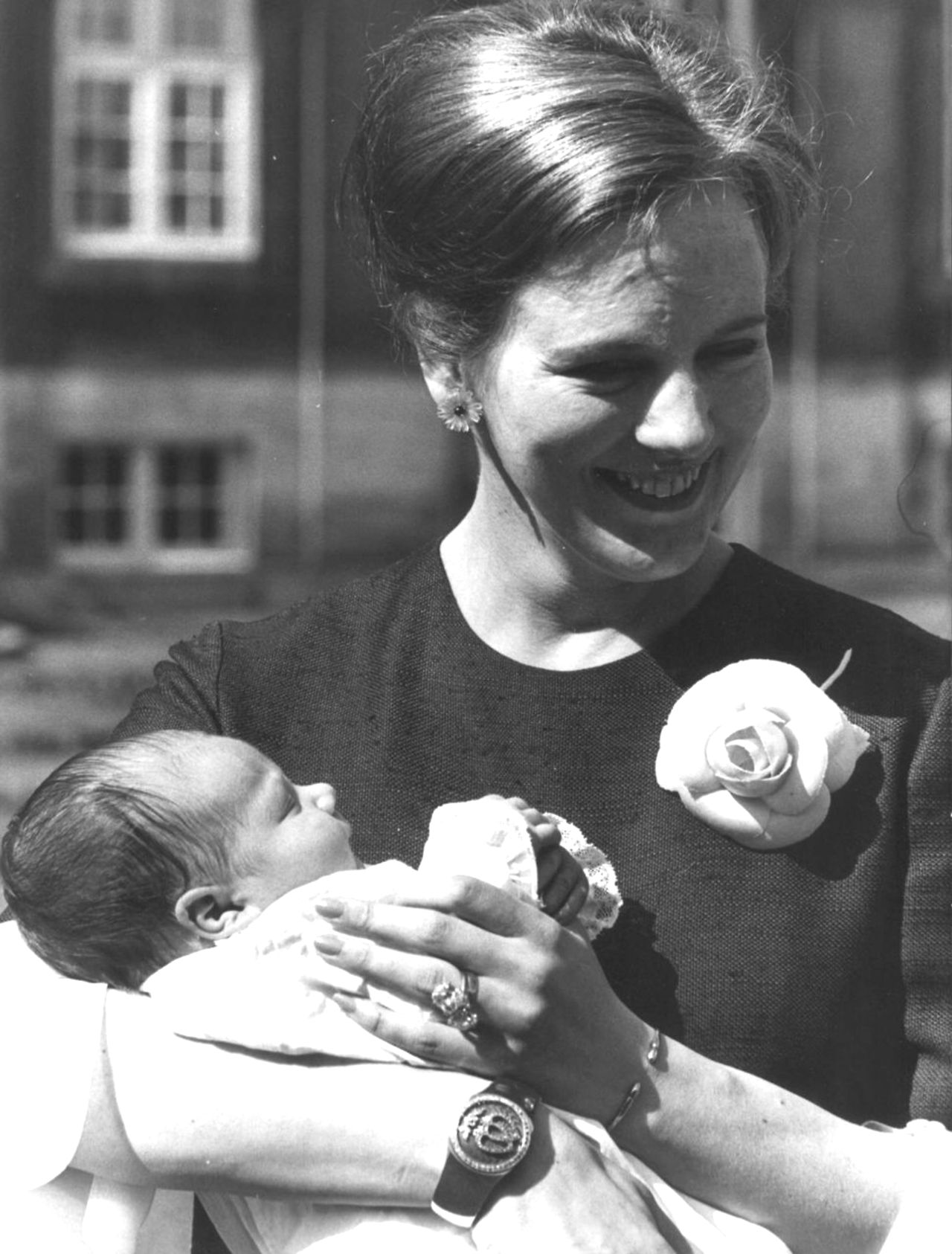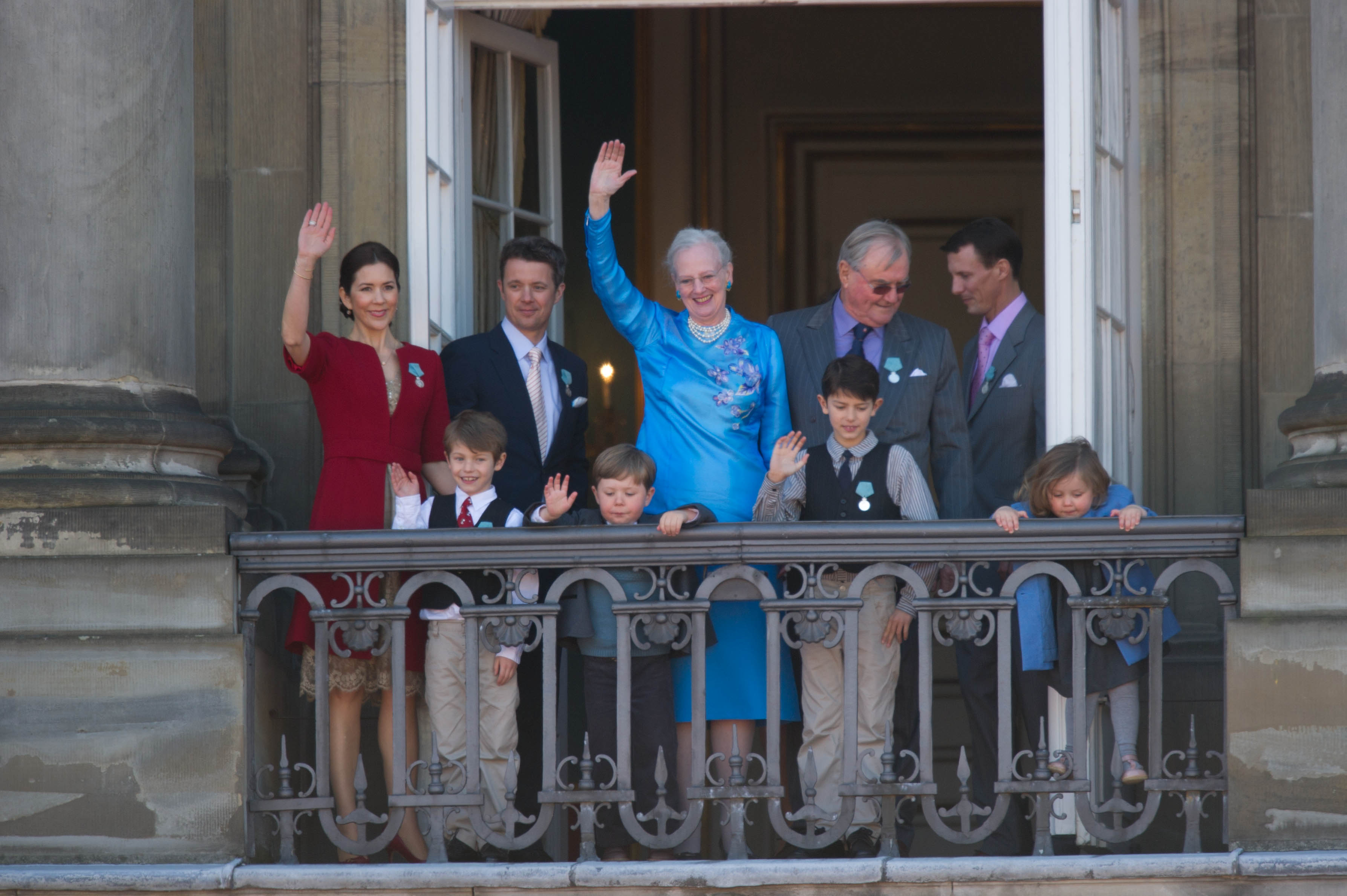.jpg) |
| By Aalborg Stift / Casper Tybjerg (Flickr: Bispevielse) via Wikimedia Commons |
Neither Was Born to Be Queen
When Elizabeth was born, her father was merely the second son of the king. His older brother was expected to marry appropriately and have his own children. Princess Elizabeth of York was expected to become less "important" as she grew. However, her uncle's abdication placed her father on the throne, and she, as his eldest daughter with no brothers, became the heiress at the age of 10. For Margrethe, things were a bit more complicated. Women had been constitutionally banned from the throne for nearly a century. Because he had no sons, her father had no heir except his younger brother despite the fact that he had three daughters. Just before her twelfth birthday a constitutional change was approved by popular referendum and she became the heiress.
 |
| Elizabeth during her WWII service via Wikimedia Commons |
Elizabeth was nicknamed Lilibet in her family after early attempts at pronouncing her own name, while Margrethe was nicknamed Daisy, the English name for the flower called a marguerite. Each of them became big sisters at the age of four, although Daisy got a second sister when she was six. Both future queens were adored by their fathers and close to their mothers. During World War II, they both stayed in their home countries while other royal children were sent elsewhere for safety. Lilibet spent much of the war at Windsor Castle while Daisy, born just a week after the Nazi invasion, spent her early childhood at the heart of occupied Denmark.
Both Were Specially Prepared for Queenship
Although Elizabeth was privately educated at home, she also had special lessons in constitutional history with the head of nearby Eton College. She also did a brief stint in the Auxiliary Territorial Services, proudly learning to become a mechanic as her part of the war effort once she became old enough. Born into a later generation, Margrethe received a much more formal education, studying at four universities (Cambridge, Aarhus, Sorbonne, and London School of Economics). She served 12 years in military service.
 |
| Margrethe with Frederik via Wikimedia Commons |
Elizabeth and Margrethe each inherited their thrones from their fathers when they had two young children. Elizabeth was only 25 when her father passed away. Married just four years at the time, her son Charles was three and daughter Anne was 18 months old. Margrethe was a bit older at age 31 but her sons Frederik and Joachim were three and two. After many years break, Elizabeth had two more children, sons Andrew and Edward, while Margrethe did not have any more offspring after her accession. However, they now both have eight grandchildren. Of course, Elizabeth is well ahead of Margrethe when it comes to great-grands; her fifth is due any day while Margrethe still has many years to wait since her oldest grandchild is only 14.
They Both Have Historic Names
Although each was named for a close relative (Elizabeth for her mum and Margrethe for her granny), they each have legendary predecessors with the same name. Queen Elizabeth I ruled England in the 16th Century during an era of great economic, artistic and political expansion. Queen Margrethe I was Queen of Denmark as the daughter of the Danish King, and became Queen Consort of Sweden and Norway by marriage. She oversaw the Kalmar Union, which united all of the Scandinavian countries under one ruler for over a century, beginning in 1397.
 |
| Ruby Jubilee in Denmark By Comrade Foot via Wikimedia Commons |
In 2012, both ladies celebrated Jubilees, which allowed the public to show their love for their monarchs. Elizabeth's Diamond Jubilee, celebrating 60 years on the throne, featured a water pageant, huge concert and tours by the entire royal family throughout the United Kingdom and the Commonwealth countries. Margrethe's Ruby Jubilee, celebrating 40 years, included a gala dinner and concert. They both received many jubilee gifts, but Margrethe received the best with the birth of her youngest grandchild, Princess Athina.
They Are Related to Each Other
Like most of today's European monarchs, they are closely related in multiple ways. They are both great-great granddaughters of Christian IX of Denmark, whose daughter Alexandra married King Edward VIII of the United Kingdom. They are also both great-great granddaughters of Britain's Queen Victoria, whose granddaughter Princess Margaret of Connaught married the future King of Sweden and became the mother of Princess Ingrid of Sweden, who married King Frederik IX of Denmark, and named her first child Margrethe after her own mother. Margrethe is also first cousins with the King of Sweden, and both are more distant cousins with the King of Norway and even more distantly related to the King of Spain.
They Both Adore Their Husbands
While others find Prince Philip and Prince Henrik to be irascible and a bit snobbish, their wives have always adored them. As the Queen's Consort, both men have struggled with their roles at different times. It was not always easy for men of their generation to take second place to their wives, but they have managed to be great supporters. Their wives have tried to repay them by publicly praising them and by ensuring that their descendants will carry on their names. In Britain, Elizabeth added her husband's adopted surname (he was born a Prince of Greece and Denmark) was added to the royal surname by declaring that their nonregal descendants would bear the hyphenated Mountbatten-Windsor. Although she specifically left the direct heirs out of this declaration, the new name has been used by both her heir Prince Charles and his heir Prince William. In Margrethe's case, she created the special Danish title Count of Monpezat to be borne by their descendants in honor of Henrik's family, which uses the French comital title of Counts Laborde de Monpezat.
In both the United Kingdom and Denmark, long live The Queen!
 |
| Queen Margrethe and her family five years ago on her 70th birthday. By Bill Ebbesen via Wikimedia Commons |
No comments:
Post a Comment